Early 19th Century English Bronze Horizontal Sundial by Cary of London
£2,450
Request Information
Follow Us
Early 19th Century English Bronze Horizontal Sundial by Cary of London
An early 19th-century horizontal sundial by Cary London.
This 12” diameter bronze sundial is finely engraved and has a 16 point compass rose in the middle. The sundial was meant to be used outside in a garden on the latitude of the London area. The engraved base plate, which is of fantastic deep and original patina, has a Roman chapter ring with minute divisions, on which the gnomon casts its shadow and the time can be read.
In addition, there is a rare equation-of-time ring, which relates solar time to mean time (being the time we read on a clock). The difference between solar time and real-time varies from +16 to -15 minutes. This is reflected on this ring and is facilitated by the words Slower Watch and Watch Faster.
The sundial is signed by the maker at the bottom in the following manner, ‘Cary London’, indicating that the sundial was made by the eminent Cary family of instrument, globe and map makers who were predominantly based in the Strand, London throughout the 18th and 19th centuries.
Condition
Good. Wear consistent with age and use.
Dimensions
Height: 6.89 in. (17.5 cm)
Diameter: 12.01 in. (30.5 cm)
PREVIOUSLY SOLD
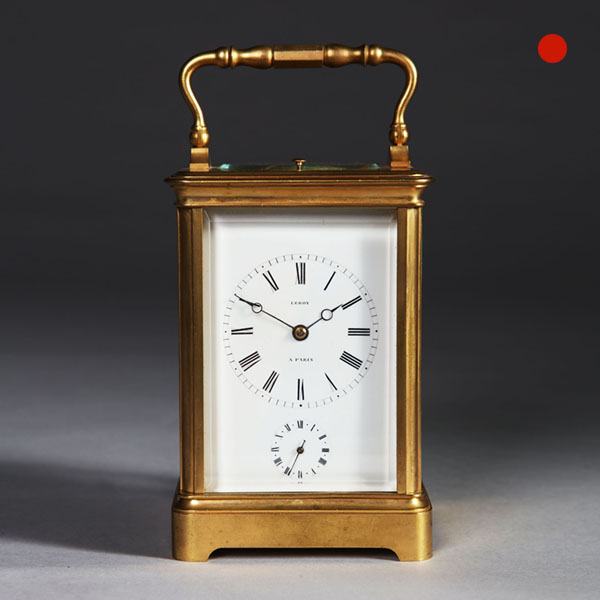
19th-Century Quarter-striking Carriage Clock by Leroy, Paris
The gilt-brass, so-called corniche case has bevelled glass panels on all sides so that the movement is entirely visible. It is surmounted by a shaped carrying handle. The white enamel dial has a Roman chapter ring, with Arabic five-minute and minute divisions.
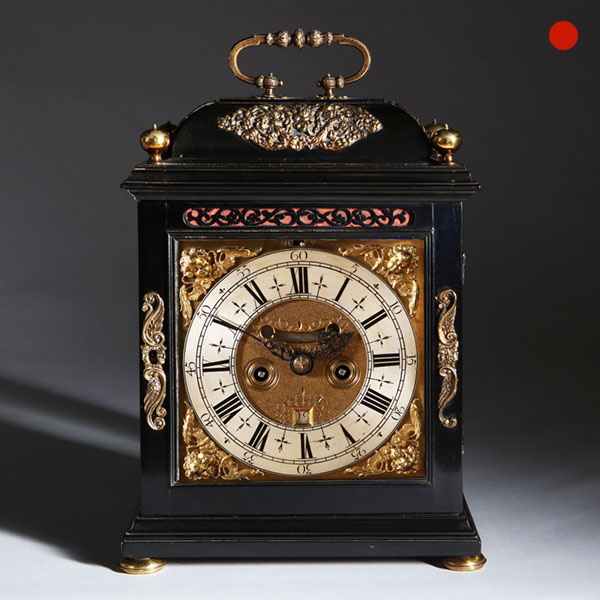
William and Mary Ebony Veneered Bracket Clock by Johnathan Lowndes
The ebony-veneered case has a so-called domed top, a design which became popular in the Charles II period (from 1675 onwards). The case is adorned with repousse brass ornaments and rests on gilt-brass bun feet. It is surmounted by a brass carrying handle of typical shape.
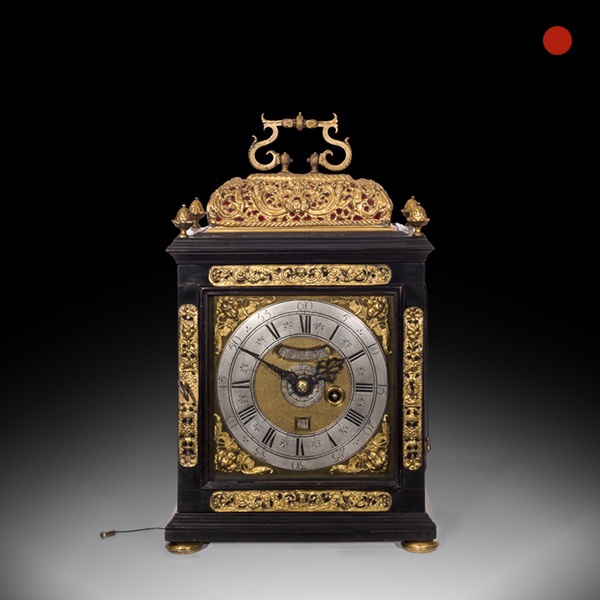
17th-Century Ebony Veneered Table Clock with Alarm and Pull Quarter Repeat
A magnificent sprung driven table clock by respected London maker George Etherington. The late 17th century, ebony- veneered table clock with alarm and pull quarter repeat on two bells, signed on the chapter ring Etherington London, and on the backplate Geo Etherington LONDON, c. 1695-1700.
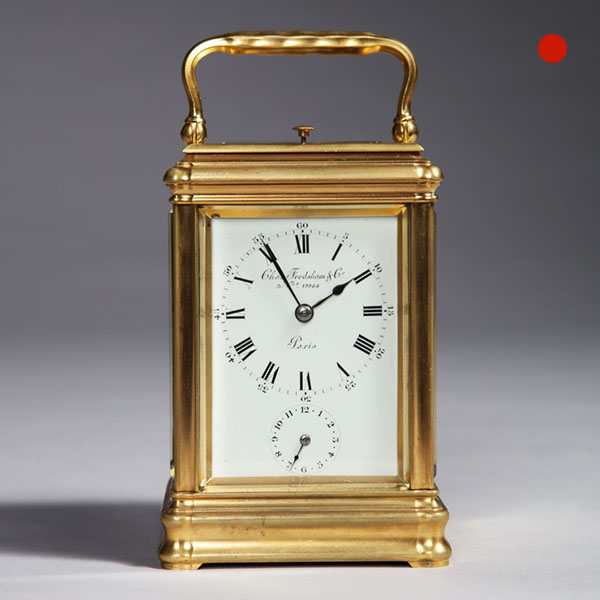
19th-Century Carriage Clock signed Charles Frodsham, London
The so-called gorge case has its original gilding. It has bevelled glass panels on all sides so that the movement is entirely visible and is surmounted by a shaped carrying handle. The white enamel dial has a Roman chapter ring, with Arabic five-minute and minute divisions.

19th-Century Quarter-striking Carriage Clock by Leroy, Paris
The gilt-brass, so-called corniche case has bevelled glass panels on all sides so that the movement is entirely visible. It is surmounted by a shaped carrying handle. The white enamel dial has a Roman chapter ring, with Arabic five-minute and minute divisions.

William and Mary Ebony Veneered Bracket Clock by Johnathan Lowndes
The ebony-veneered case has a so-called domed top, a design which became popular in the Charles II period (from 1675 onwards). The case is adorned with repousse brass ornaments and rests on gilt-brass bun feet. It is surmounted by a brass carrying handle of typical shape.

17th-Century Ebony Veneered Table Clock with Alarm and Pull Quarter Repeat
A magnificent sprung driven table clock by respected London maker George Etherington. The late 17th century, ebony- veneered table clock with alarm and pull quarter repeat on two bells, signed on the chapter ring Etherington London, and on the backplate Geo Etherington LONDON, c. 1695-1700.

19th-Century Carriage Clock signed Charles Frodsham, London
The so-called gorge case has its original gilding. It has bevelled glass panels on all sides so that the movement is entirely visible and is surmounted by a shaped carrying handle. The white enamel dial has a Roman chapter ring, with Arabic five-minute and minute divisions.
YOU MAY ALSO LIKE
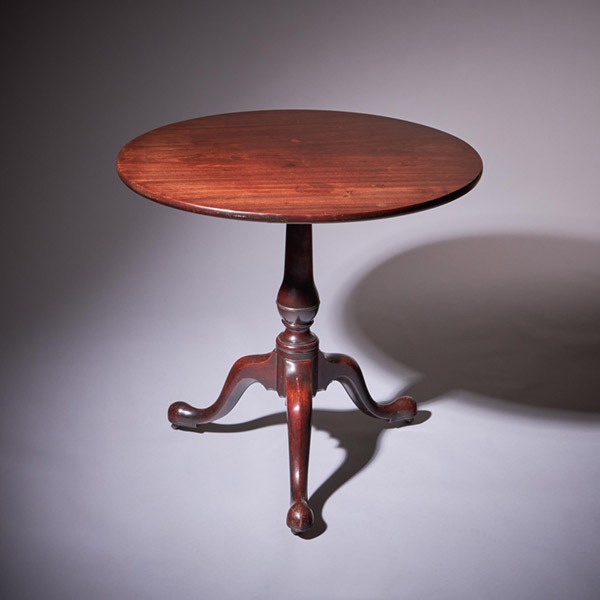
18th Century George III Mahogany Tripod Table, Circa 1770
18th Century George III Mahogany Tripod Table, Circa 1770 £2,200Follow Us18th Century George III...
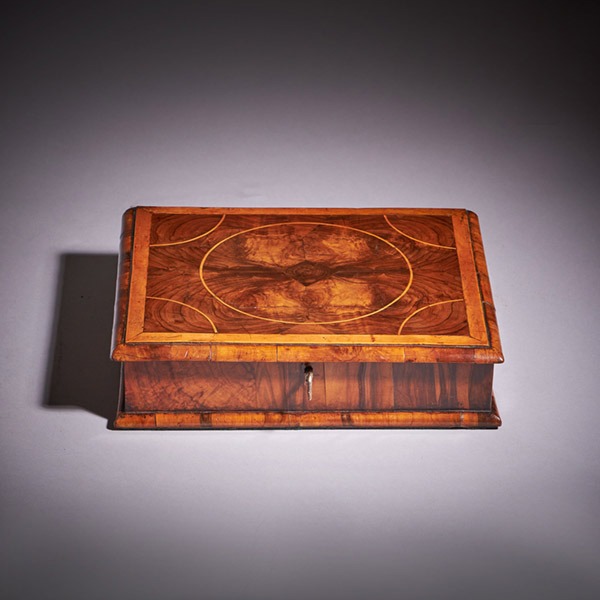
Fine William and Mary 17th Century Olive Oyster Lace Box
Fine William and Mary 17th Century Olive Oyster Lace Box £2,600Follow UsFine William and Mary 17th...

A Fine and Rare George III Octagonal Figured Satinwood Box, C.1790
A Fine and Rare George III Octagonal Figured Satinwood Box, C.1790 £2,200Follow UsA Fine and Rare...
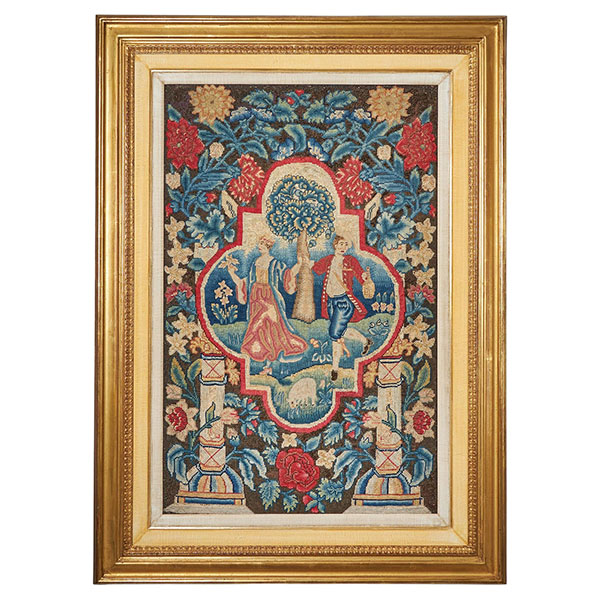
A Rare and Vibrant Framed 18th Century George II Needlework Picture, Circa 1730
A Rare and Vibrant Framed 18th Century George II Needlework Picture, Circa 1730 £16,000Follow UsA Rare and Vibrant Framed 18th Century George II Needlework Picture, Circa 1730 A rare and vibrant early 18th century George II pictorial...

A Fine George II 18Th Century Chippendale Period Carved Mahogany Torchiere. Circa 1755-1765, England
A FINE GEORGE II 18TH CENTURY CHIPPENDALE PERIOD CARVED MAHOGANY TORCHIERE Circa 1755-1765, England £25,000Follow UsA FINE GEORGE II 18TH CENTURY CHIPPENDALE PERIOD CARVED MAHOGANY TORCHIERE, Circa 1755-1765, England An exquisitely fine and...

A Fine Early 18th Century George I Burr Walnut Bureau Bookcase, Circa 1715
A Fine Early 18th Century George I Burr Walnut Bureau Bookcase, Circa 1715 £11,500Follow UsA Fine...

18th Century George III Mahogany Tripod Table, Circa 1770
18th Century George III Mahogany Tripod Table, Circa 1770 £2,200Follow Us18th Century George III...

Fine William and Mary 17th Century Olive Oyster Lace Box
Fine William and Mary 17th Century Olive Oyster Lace Box £2,600Follow UsFine William and Mary 17th...

A Fine and Rare George III Octagonal Figured Satinwood Box, C.1790
A Fine and Rare George III Octagonal Figured Satinwood Box, C.1790 £2,200Follow UsA Fine and Rare...

A Rare and Vibrant Framed 18th Century George II Needlework Picture, Circa 1730
A Rare and Vibrant Framed 18th Century George II Needlework Picture, Circa 1730 £16,000Follow UsA Rare and Vibrant Framed 18th Century George II Needlework Picture, Circa 1730 A rare and vibrant early 18th century George II pictorial...

A Fine George II 18Th Century Chippendale Period Carved Mahogany Torchiere. Circa 1755-1765, England
A FINE GEORGE II 18TH CENTURY CHIPPENDALE PERIOD CARVED MAHOGANY TORCHIERE Circa 1755-1765, England £25,000Follow UsA FINE GEORGE II 18TH CENTURY CHIPPENDALE PERIOD CARVED MAHOGANY TORCHIERE, Circa 1755-1765, England An exquisitely fine and...

A Fine Early 18th Century George I Burr Walnut Bureau Bookcase, Circa 1715
A Fine Early 18th Century George I Burr Walnut Bureau Bookcase, Circa 1715 £11,500Follow UsA Fine...







